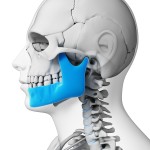
It has been estimated that between 12-65% of the populations are affected by temporomandibular disorders (TMD). It is associated with chronic pain and limited function of the temporomandibular joint (TMJ) that can impact on quality of life. A range of conservative and surgical treatments have been used to manage TMD. Conservative treatments include rest, the use of non-steroidal anti-inflammatory drugs (NSAIDs) and corticosteroids, botulinum toxin injections, bite splints, and physical therapy.
The aim of this review was to evaluate whether intra-articular injections of hyaluronic acid (HA) are better than other drugs used in TMJ arthrocentesis, for the improvement of TMD symptoms.
Methods
Searches were conducted in the Medline and Web of Science Databases for studies published in English. Randomised clinical trials (RCTs) and prospective or retrospective studies that primarily investigated the application of HA injections compared to other intra- articular medications for TMDs were considered. Two reviewers selected studies for inclusion, with study quality being assessed using the Jadad Scale. No meta-analysis was presented because of marked heterogeneity between the studies.
Results
- 8 studies (7 RCTs) involving a total of 350 patients were included.
- Sample sizes ranged from 16-100 patients with follow up periods ranging from 4 weeks to 6 months.
- All 8 studies had Jadad score of 3 or more.
- There was no consensus in the studies that HA injections showed better results than the intra-articular use of other medications for the treatment of TMD
Conclusions
The authors concluded:-
Intra-articular injections of HA are beneficial for the improvement of the pain and/or functional symptoms of TMDs. However, other drug therapies, such as corticosteroid and NSAID injections, can be used with satisfactory results.
Comments
This review has only searched two databases and only included English language studies, so there is the possibility that relevant studies could have been excluded. The review has used the Jadad scale to measure quality, which is not recommended by Cochrane. It is interesting to note that the authors classify 7 of the studies as RCTs and according to the Jadad scales all 8 are described as randomised and scored accordingly. The use of the Cochrane risk of bias tool would have been more appropriate and is likely to have results in the studies quality being downgraded. Given their conclusion it is interesting to note that in only 2 of the included studies did HA provide better outcomes with no superiority being shown in 4 studies. Given concerns regarding the quality of the included studies, the limited number and the small sample sizes the conclusions of this review should be interpreted with caution until the results of larger well-conducted RCTs are available.
Links
Primary paper
Goiato MC, da Silva EV, de Medeiros RA, Túrcio KH, Dos Santos DM. Are intra-articular injections of hyaluronic acid effective for the treatment of temporomandibular disorders? A systematic review. Int J Oral Maxillofac Surg. 2016 Jun 30. pii: S0901-5027(16)30102-3. doi: 10.1016/j.ijom.2016.06.004. [Epub ahead of print] Review. PubMed PMID: 27374020.
Other references
Dental Elf – 10th Sept 2014
Temporomandibular arthoscopy may be better than arthrocentesis for temporomandibular joint disorder

Don’t Miss- Temporomandibular joint arthrocentesis with hyaluronic acid- evidence limited. https://t.co/aW4NPokQqS
Temporomandibular joint arthrocentesis with hyaluronic acid- evidence limited. https://t.co/8iLY5Pgjof
[…] post Temporomandibular joint arthrocentesis with hyaluronic acid- evidence limited. appeared first on National Elf […]
Limited evidence for effectiveness of temporomandibular joint arthrocentesis with hyaluronic acid https://t.co/aW4NPoCriq
Is temporomandibular joint arthrocentesis with hyaluronic acid- effective? https://t.co/aW4NPokQqS
Is intra-articular injection of hyaluronic acid better than other drugs for TMJ arthrocentesis? https://t.co/aW4NPokQqS